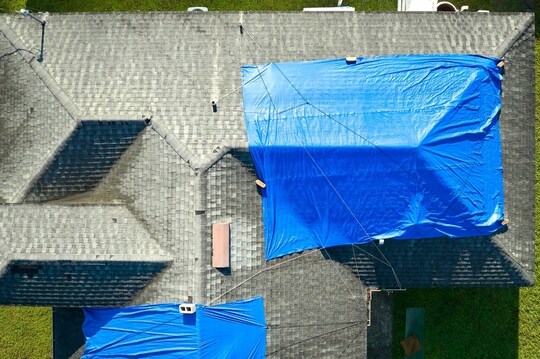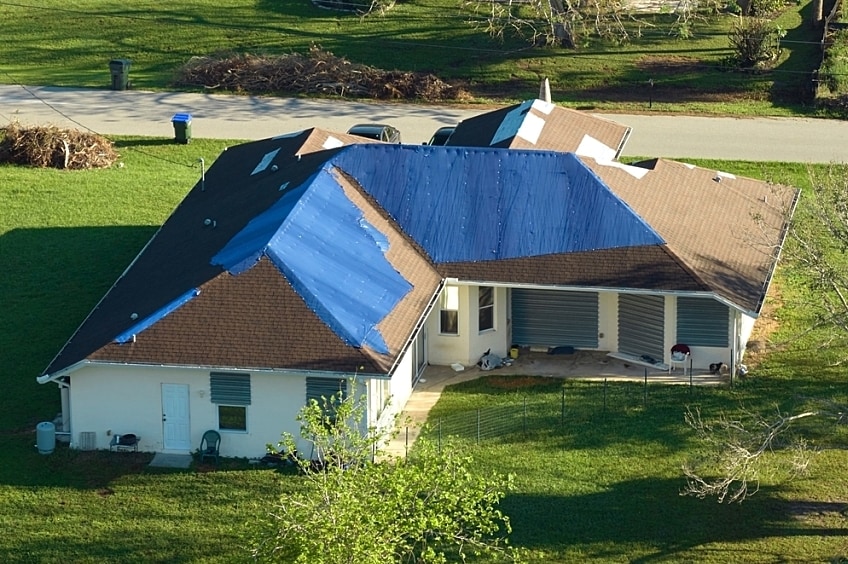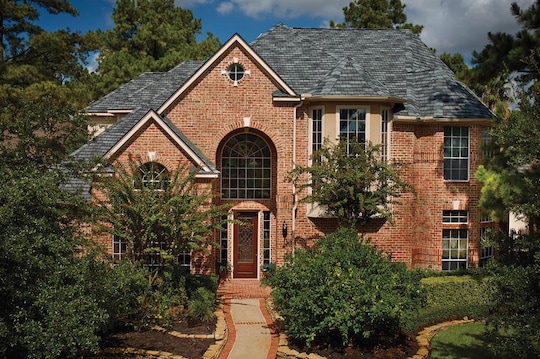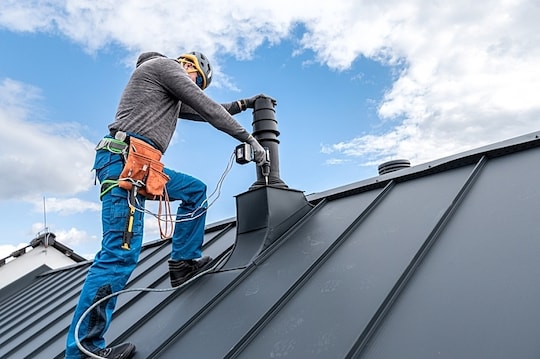
If you think your home might have a leak in the roof, you're right to be concerned. A leak, if left unrepaired, can lead to many problems, from mold to water damage. Detecting the issue early-and figuring out what's causing it-can help limit the damage.
So, here's how to tell whether you have a roof leak, the common causes, and what to do next.
How to Detect a Roof Leak
Here are a few signs you might have a leaking roof.
Staining
Water stains, which look like brownish or yellowish spots, on your walls, floors, or ceilings are signs you have a leak. A plumbing leak can also cause these stains, but finding them in the attic or near other roofing structures means water is likely coming from the roof.
Moisissure
Mold grows in humid environments, and roof leaks can create the perfect conditions for this growth. If you see mold around the attic and insulation, you may have a leak or your attic may not have proper ventilation. Either way, it's an issue you'll want to address.
Affaissement
Sagging ceilings can indicate leaks and issues with your roof's structural integrity. If water has accumulated in the roof decking, the wooden materials can rot and become damaged, weakening them. As water collects, it can also cause these materials to grow heavier, leading to sagging ceilings. This is a safety hazard you'll want to fix as soon as possible.
Common Causes of Roof Leaks
Your roofing system might develop a leak for several reasons.
Severe Weather
Weather-related damage is one of the major sources of roof leaks. Exposure to moisture from rainstorms can cause materials like shingles or flashing to deteriorate and eventually allow water to seep into the structure below. Sharp winds can lift or warp shingles, letting water enter the damaged area. Hail can crack shingles and flashing. Even temperature fluctuations can cause materials to become brittle and crack as they expand and contract with these changes.
Faulty Roof Work
Improperly installing roofing materials can also lead to roof leaks. When shingles aren't aligned or securely attached to the roof, it creates small openings where water can pool. This can occur when nails aren't driven in all the way or not enough nails are used. That's why certain shingles like GAF Timberline HDZ® use patented LayerLock® Technology that helps your roofer achieve a 99,9 % nailing accuracy. Since flashing protects the vulnerable parts of the roof, improper flashing installation can also cause problems.
Additionally, many homeowners try to save money by making repairs themselves or hiring low-quality contractors who don't do the job correctly or use cheap materials. This can lead to further and more expensive repairs down the road.
Simple Wear and Tear
Wear and tear over time can also cause roof leaks. Roofing materials can deteriorate over the years due to harsh weather, ultraviolet rays, and roof movements.
Animals and Tree Branches
Less common causes, which still pop up now and then, include damage from animals and tree branches. The heavy impact from tree branches can crack shingles, leaving room for openings. Small critters like rats and squirrels can chew through roofing material or burrow into it, creating openings for water to enter.
Call A Professional to Repair Leaks
It isn't always easy to identify the main source of a leak yourself. So, as soon as you notice any signs of a leak, call a trusted roofing contractor. They can find the leak's source, install quality materials to fix it before further damage occurs, and prevent it from happening again. A contractor can also help determine whether you need a new roof entirely.
How to Prevent Roof Leaks in the Future
With regular maintenance, you can catch leaks before they occur and extend your roof's life.
Schedule A Professional Inspection
It's recommended to get your roof professionally inspected at least twice a year. When a leak is in the first stages, you might not notice signs immediately. A contractor can detect these issues before they happen and repair any damaged areas, such as shingles or flashing. These proactive steps are often less expensive than, for example, replacing damaged insulation from water damage or replacing the roof decking due to rot.
Inspect Your Attic and Roof
In addition to professional inspections, monitor your attic and roof to determine whether you need a roof repair. From your attic, look for any sunlight that might be entering. If light can get into your attic, that means water can too. If you have a leak, you might see small dark spots or smell mildew or mold.
While you should avoid climbing on your roof (leave this to the professionals who have the proper safety equipment and training), you can inspect your roof from the ground. Look for missing or damaged shingles, holes, and damage to the gutters and flashing.
Clean Your Gutters
Make gutter cleaning part of your yearly maintenance, or hire someone to do it. When your gutters become clogged with debris, water has nowhere to go and will remain on the roof or make its way inside. Installing gutter guards can help reduce the need for gutter cleanup.
Trim Tree Branches
Trimming the tree branches near your roof can further prevent leaves from clogging the gutters. This step can also prevent branches from scratching your shingles on windy days or falling on your roof, leading to cracks.
Catch Leaks Early to Minimize Damage
Your roof is one of your home's most important structures. So, as soon as you notice signs of a leak, contact a roofing contractor, and prevent future leaks with regular roof maintenance and inspections. By taking these steps, you can ensure your roof protects what matters most for years to come.
Ready to hire a contractor to fix a leak or inspect your roof? Find a GAF-Certified Contractor* near you.
*Les entrepreneurs inscrits aux programmes de certification GAF ne sont pas des employés ou des agents de GAF, qui ne contrôle pas et ne supervise pas ces entreprises indépendantes. Les entrepreneurs peuvent recevoir des avantages, tels que des points de fidélité et des remises sur les outils de marketing de GAF pour avoir participé au programme et offert des garanties améliorées GAF, qui exigent l'utilisation d'une quantité minimale de produits de la marque. Your dealings with a Contractor, and any services they provide to you, are subject to the GAF Contractor Terms of Use.



